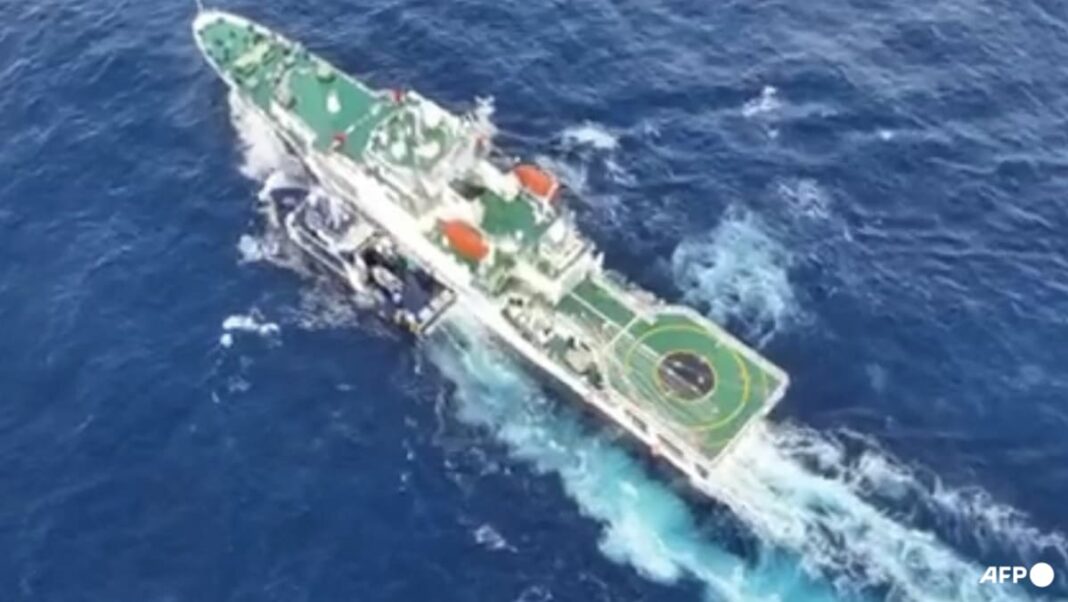MANILA: A Clash at Sea
In the vast expanse of the South China Sea, tensions between the Philippines and China have once again come to a head in a maritime confrontation at the Scarborough Shoal. The conflicting accounts of the incident paint a picture of aggression and danger on the high seas, raising concerns about the longstanding dispute between these two neighboring nations.
China’s Coast Guard claims that Philippine ships attempted to enter their territorial waters, prompting a response to maintain control over the situation. On the other hand, the Philippine Coast Guard asserts that Chinese vessels engaged in aggressive actions against their routine patrol, escalating the conflict with water cannons and dangerous maneuvers.
As the two sides clash in the waters off the coast of Manila, the world watches with bated breath to see how this latest chapter in the South China Sea dispute will unfold.
Full Review
The maritime confrontation between the Philippine and Chinese coastguards at the Scarborough Shoal highlights the ongoing tensions in the South China Sea. China’s Coast Guard claims that Philippine ships attempted to enter their territorial waters, prompting a response to maintain control over the situation. However, the Philippine Coast Guard asserts that Chinese vessels engaged in aggressive actions against their routine patrol, escalating the conflict with dangerous maneuvers.
Amidst the conflicting accounts of the incident, it is clear that the Scarborough Shoal remains a contentious flashpoint in the dispute between the Philippines and China. The use of water cannons and aggressive tactics only serves to exacerbate the already fragile situation in the region, raising concerns about the potential for further escalation.
As the two sides continue to engage in a war of words and actions, the international community must closely monitor the situation to prevent any further destabilization in the South China Sea. The clash at the Scarborough Shoal serves as a stark reminder of the challenges and complexities of maritime disputes in the region, with implications that extend far beyond the waters off the coast of Manila.
Conclusion
The maritime confrontation between the Philippine and Chinese coastguards at the Scarborough Shoal underscores the ongoing tensions in the South China Sea. As the two sides continue to clash over territorial claims and maritime rights, it is imperative that diplomatic efforts be made to de-escalate the situation and prevent any further conflict in the region. The international community must remain vigilant and engaged in resolving the dispute to ensure peace and stability in the South China Sea.
FAQs
1. What prompted the maritime confrontation at the Scarborough Shoal?
The conflicting territorial claims between the Philippines and China led to the maritime confrontation, with both sides accusing the other of aggressive actions.
2. How did China’s Coast Guard respond to the situation?
China’s Coast Guard claimed that Philippine ships attempted to enter their territorial waters, prompting a response to maintain control over the situation.
3. What actions did the Philippine Coast Guard take during the confrontation?
The Philippine Coast Guard asserts that Chinese vessels engaged in aggressive actions against their routine patrol, including the use of water cannons and dangerous maneuvers.
4. What are the broader implications of the clash at the Scarborough Shoal?
The clash at the Scarborough Shoal highlights the challenges and complexities of maritime disputes in the South China Sea, with implications for regional stability and international relations.
5. How should the international community respond to the situation?
The international community must closely monitor the situation and engage in diplomatic efforts to de-escalate the conflict and prevent any further destabilization in the region.

